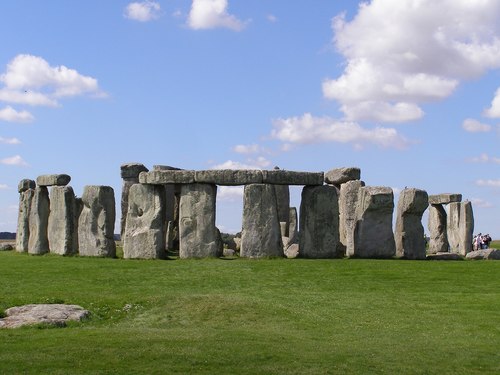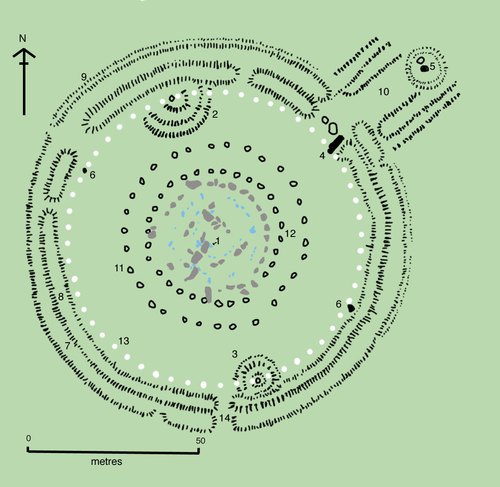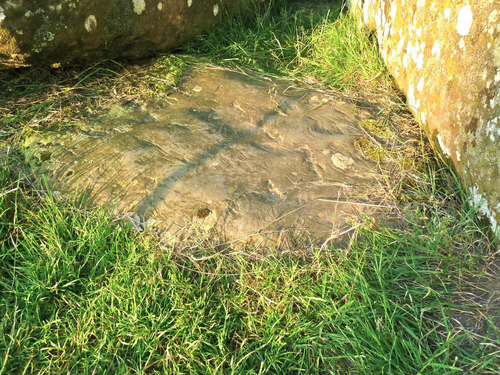Noiser
Stonehenge: Ancient Wonder, Enduring Mystery
Play Short History Of... Stonehenge
Stonehenge, older than the pyramids and just as cryptic, has remained a point of fascination and mystery for thousands of years. Here is everything you need to know about the enigma that is Stonehenge.

What is Stonehenge?
In archaeological terms, a henge is simply a prehistoric circular or oval monument consisting of a flat area enclosed by a ditch and external bank. Built during the Neolithic and early Bronze ages, there are around 100 henges remaining in Britain and Ireland.
Stonehenge, however, stands out for its size and complexity. Located in Salisbury Plains in the south of England, the monument consists of 83 stones arranged in different patterns. This awe-inspiring structure wasn't built all at once, but was constructed and modified over a period of about 1,500 years, with the main stages of building occurring between 3000 BC and 2000 BC.
The outer ring is formed by massive sarsen stones, which stand up to 7 metres tall and weigh as much as 25 tonnes. Even more remarkable are the horizontal lintels that cap these gigantic stones, creating a giant stone circle that looks like a series of doorways.
Inside the outer ring lies another circle composed of smaller stones called bluestones. Incredibly, these stones are believed to have somehow been transported from the Preseli Hills in Wales, over 150 miles away.
Stonehenge’s most iconic feature is the horseshoe-shaped arrangement of five trilithons at the centre of the monument. These towering stone arches are positioned around the central altar stone, which may have served as the focal point of the entire site.

How was Stonehenge built?
Considering the sheer scale of Stonehenge, it’s natural to wonder how such a monumental structure was built without modern machinery.
We know that the rocks, once at the site, were shaped and refined with stone hammers. Sadly, this is the extent of our knowledge. No one even knows for certain how the massive stone slabs that make up Stonehenge were transported to the site in the first place. Some suggest that wooden sledges, pulled by large teams of people using ropes, were used to drag the stones over land. Others hypothesise that the stones might have been moved using rafts or log boats along rivers and coastal routes.
However, these theories don't explain exactly how the colossal slabs were lifted and precisely positioned to create the iconic monument we see today. Some researchers believe that ancient Britons may have used a combination of ramps, levers, and counterweights, but the truth is we will likely never know for sure.
All we can do is make educated guesses and experiment. And, of course, if you do an experiment and it works, that doesn't say that that was the way of doing it. It just shows that it was one possible way of doing it.
Julian Richards, archaeologist and author of the official Stonehenge guidebook.
What is the purpose of Stonehenge?
Stonehenge’s construction methods remain elusive, but its exact purpose is an even deeper mystery.
We do know that the site was once used as a graveyard. Archaeologists have uncovered 63 sets of cremated remains within the henge. However, this practice predates the arrival of the iconic standing stones, indicating that Stonehenge’s role evolved over time.
Some have argued that Stonehenge was a place of healing. Others say that it was a “soundscape” where people could enjoy music because the arrangement of stones creates an acoustic effect similar to a cathedral or concert hall.
Anthropologists suggest Stonehenge may have been a national project that helped Neolithic people from all over the country to bond. As such, the Welsh brought their bluestones. Workers arrived from the north with their livestock. People from nearby Marlborough gave their sarsen stones. And scores of other unknown clans joined together in an act of unity to create something for everyone, akin to a national stadium today. This theory received a boost thanks to new research, which states that The Altar Stone at Stonehenge came from the Orcadian Basin in northeastern Scotland.
 Among the most intriguing theories is that Stonehenge served as both a calendar and a site for astronomical observation. The stones' alignment with the sunrise during the summer solstice and the sunset during the winter solstice suggests that the monument was used to track the movement of the sun and moon.
Among the most intriguing theories is that Stonehenge served as both a calendar and a site for astronomical observation. The stones' alignment with the sunrise during the summer solstice and the sunset during the winter solstice suggests that the monument was used to track the movement of the sun and moon.
This emphasis on the sun is not something you see just at Stonehenge, but at so many monuments of that period around the British Isles. What you want to know is that the sun, which goes on this annual journey around the sky, is going to carry on doing that. You've partly tamed it. You've partly controlled it.
Julian Richards, archaeologist and author of the official Stonehenge guidebook.
Stonehenge Today
Today, some 5,000 years after it was built, Stonehenge has maintained its deep spiritual and cultural significance. It remains a sacred site for modern pagans and druids, who gather there to mark holy days. The summer solstice on June 21st is one of Stonehenge's most significant events, drawing hundreds of visitors each year. As the sun rises directly over the Heel Stone, it creates a unique visual spectacle. This alignment is believed to have held ceremonial importance for thousands of years.
 Stonehenge's appeal extends far beyond the solstice. In 2023 alone, over 1.3 million people journeyed to this ancient wonder. Curious tourists, modern-day druids, and everyone in between continue to be drawn to this remarkable testament to prehistoric ingenuity
Stonehenge's appeal extends far beyond the solstice. In 2023 alone, over 1.3 million people journeyed to this ancient wonder. Curious tourists, modern-day druids, and everyone in between continue to be drawn to this remarkable testament to prehistoric ingenuity